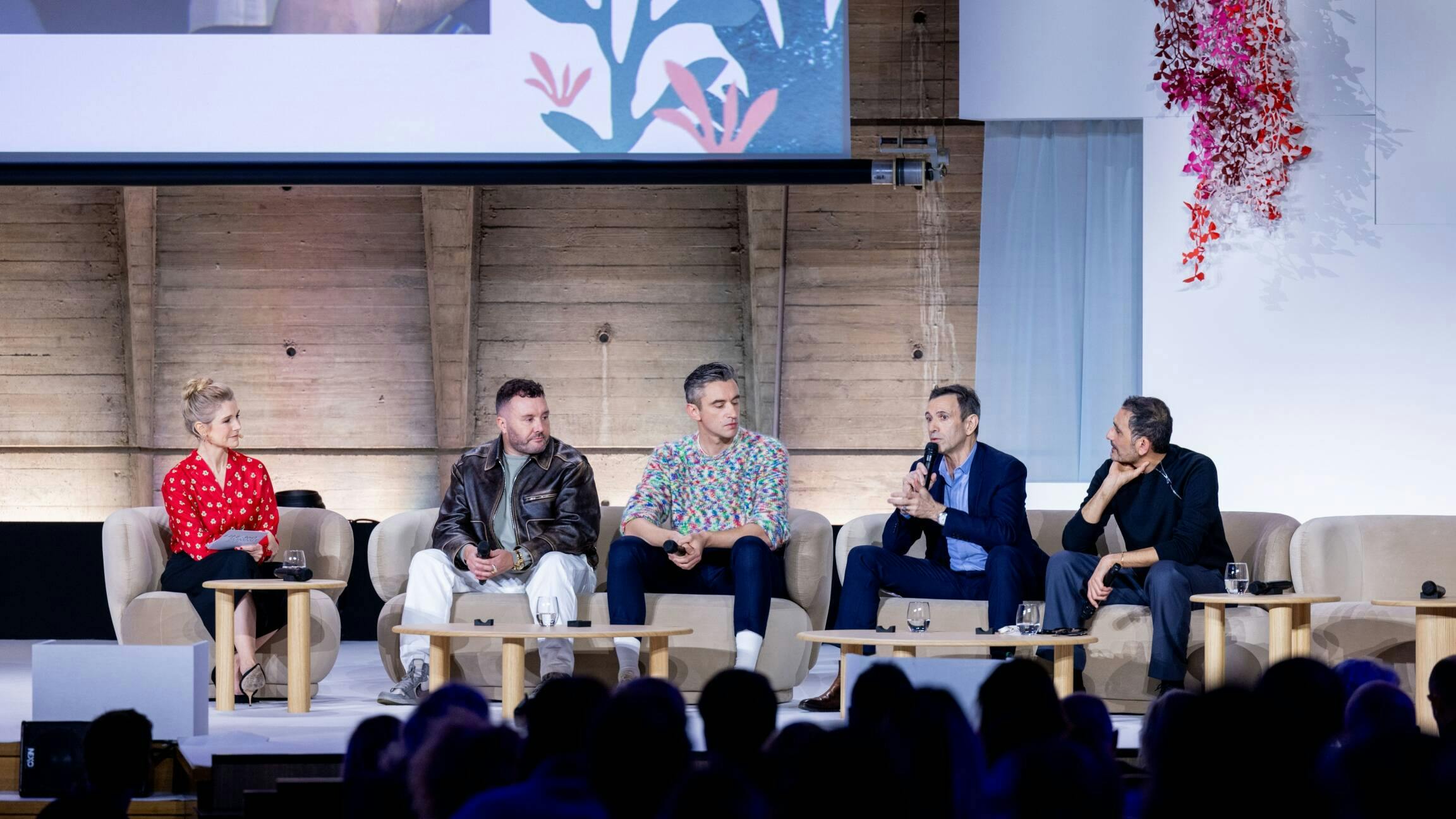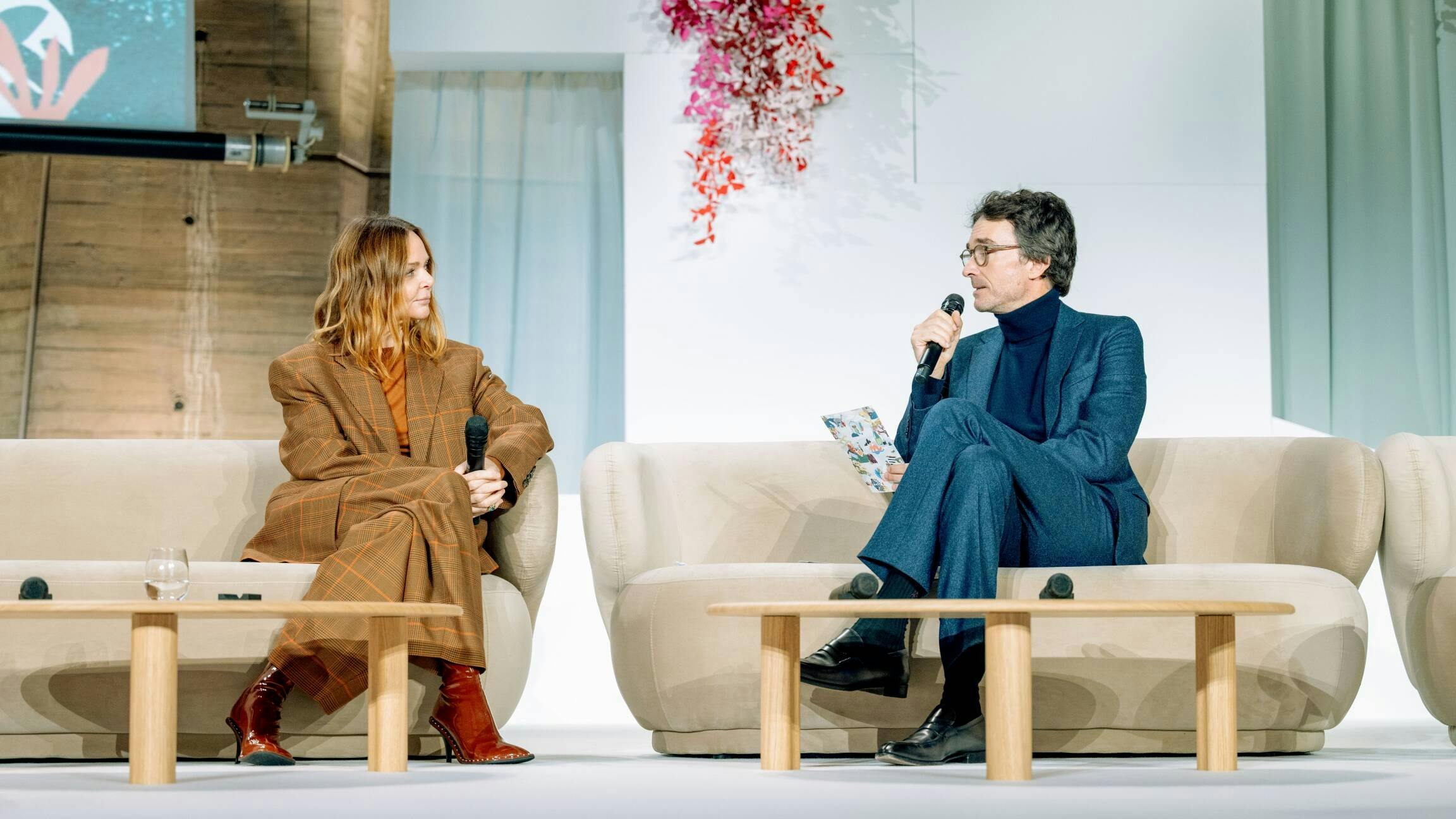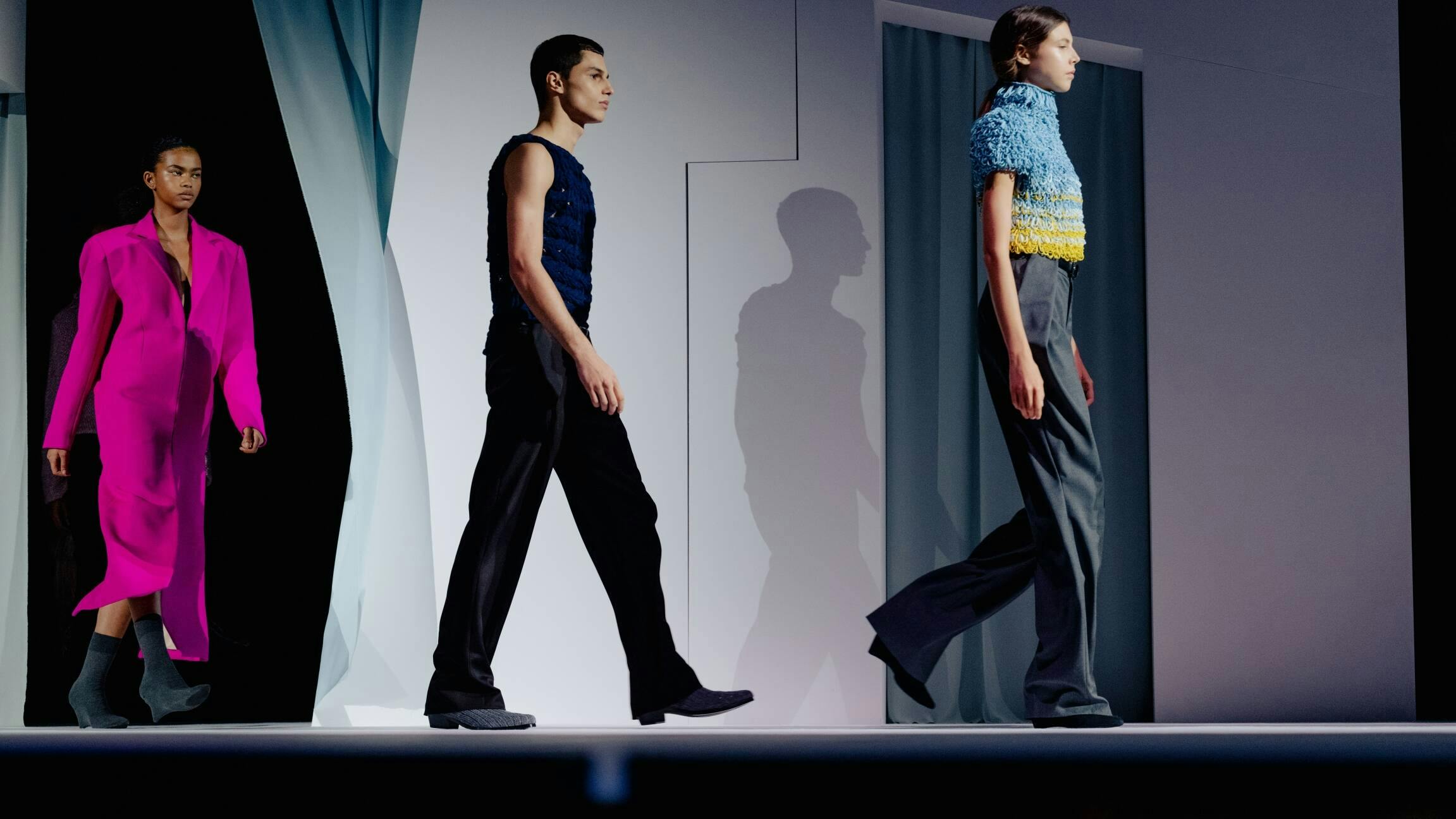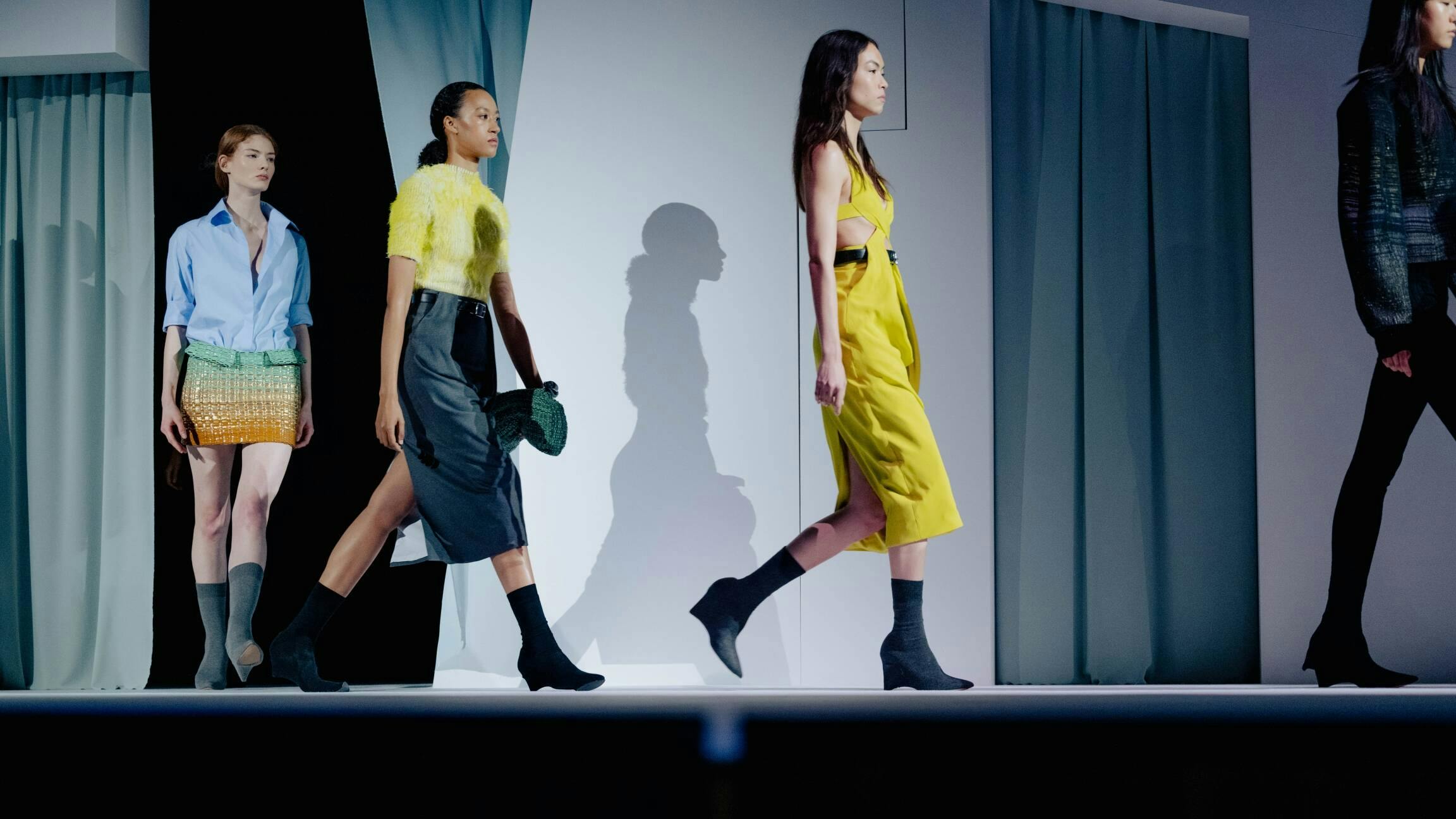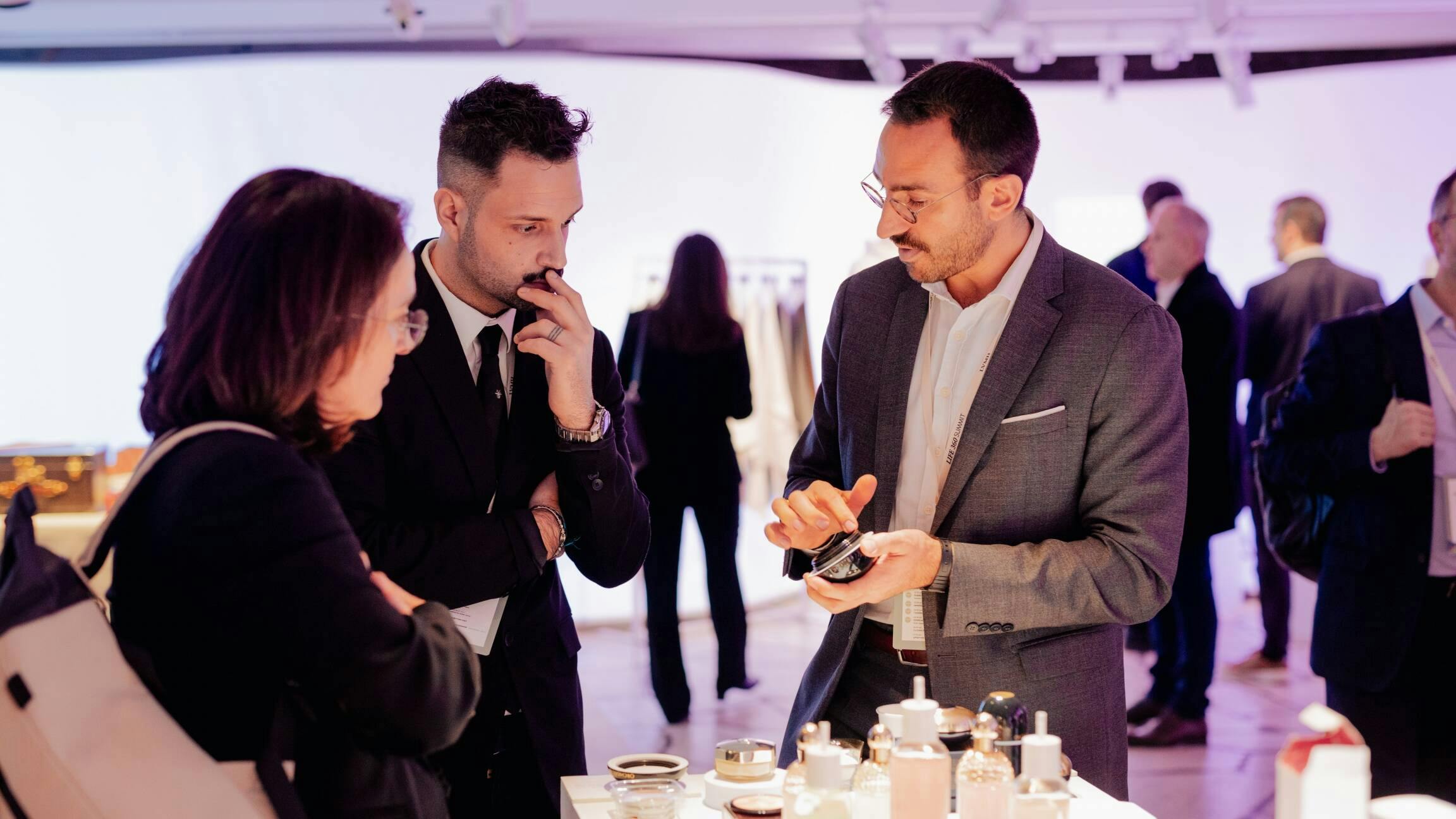At the LIFE 360 Summit, LVMH announces the first results of its environmental strategy and sets its sights on reducing its scope 3 by announcing a new action program: LIFE 360 Business Partners
Published on 12.15.2023 • 12 minutes- Environment
- LVMH
- Europe
- Savoir-faire
- Partnerships
- Innovation
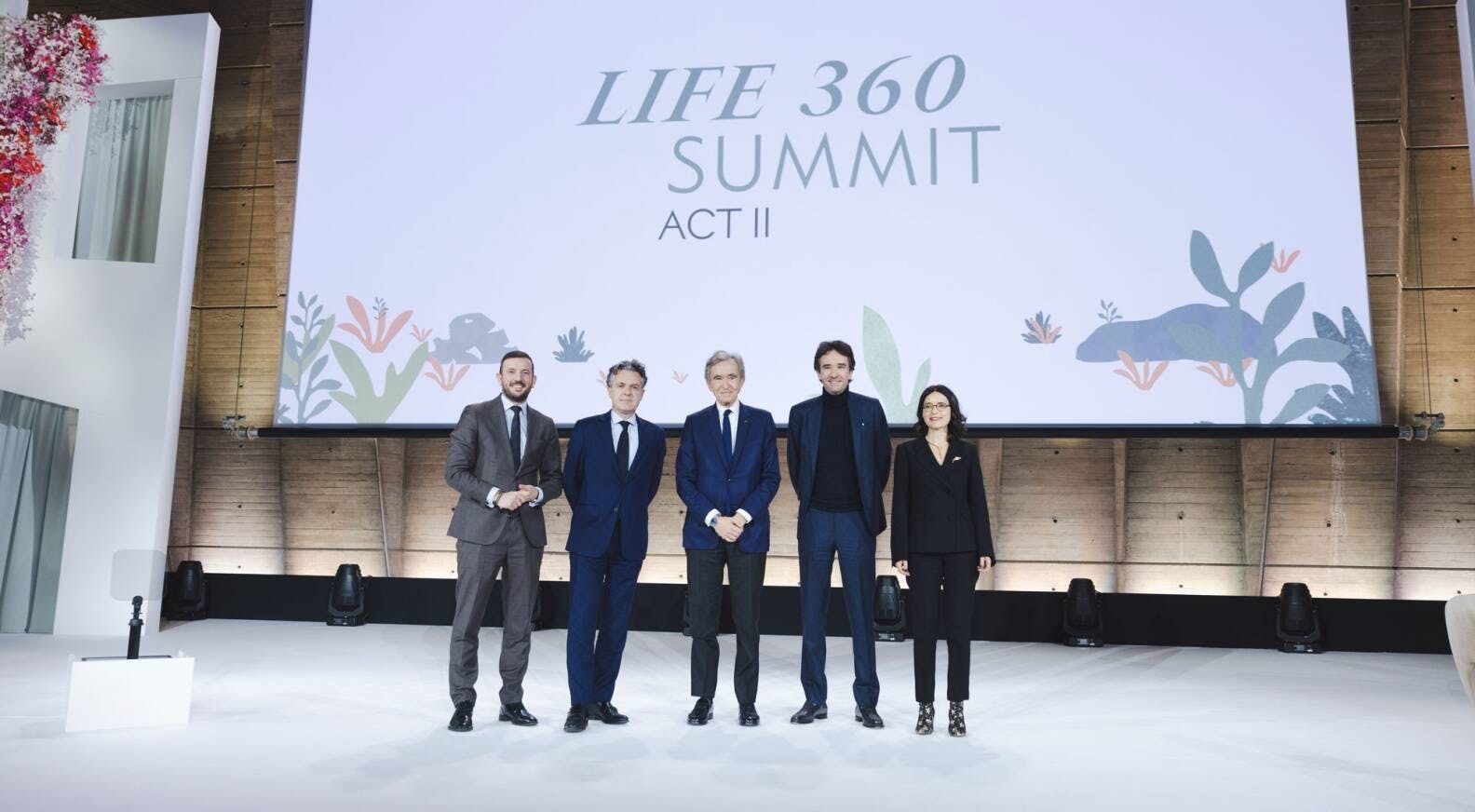
At UNESCO on Thursday, December 14, at an event attended by Christophe Béchu (French Minister for Ecological Transition and Cohesion of the Territories), Virginijus Sinkevičius (European Commissioner for the Environment, Oceans and Fisheries), Bernard Arnault (LVMH Chairman and CEO) and Antoine Arnault (LVMH Image & Environment), the Group gathered more than 500 of its leaders, together with its partners and other sector players, to announce the first results of its LIFE 360 (LVMH Initiatives For the Environment) program launched in 2021, as it neared its 2023 deadline. The tangible components of its environmental performance concerning the circular economy, biodiversity protection, CO2 emissions reduction and traceability & transparency – the main areas underpinning this program – were revealed at the event and at an exhibition. The Group also introduced an unprecedented program with its supplier ecosystem, aimed at supporting them in reducing their carbon footprint as well as water and biodiversity impact. All participants were able to take part in talks and workshops.
LIFE 360 – 2023 commitments fulfilled
For over 30 years, LVMH has been committed to protecting the environment, driven by a long-term vision and a holistic and scientific approach across all its business sectors. In 2021, the Group launched the LIFE 360 plan, which included objectives to be achieved by 2023, 2026 and 2030 and focused on four pillars: Creative circularity, Biodiversity, Climate, and Traceability & Transparency. The LIFE 360 Summit presented the major achievements of the Group and its Maisons while providing specific insights into future ambitions.
- Creative circularity: LVMH has achieved its 2023 target of offering new circular services by establishing a repair-and-care task force in several of the Group’s Maisons. For example, Louis Vuitton repairs 600,000 products per year, while 79% of Berluti’s leather products are repairable. RIMOWA offers a lifetime guarantee for its luggage and bags, and Le Bon Marché is extending the life of its products through an alterations service, as well as watch and shoe repair services.
With the creation of LVMH Circularity, an ecosystem that brings together the reuse and recycling expertise of the Group and its partners (Nona Source, the CEDRE platform, weturn, and Agence Don en Nature), LVMH is demonstrating its commitment to giving a second life to fabric and leather offcuts, unused raw materials and unsold products. - Biodiversity: After having helped regenerate 1.37 million hectares by the end of 2022, LVMH is continuing its efforts to reach its target of regenerating five million hectares by the end of 2030. This ambition will be made possible:
- by launching various regenerative agriculture programs: in Türkiye for cotton, Australia for merino wool, South Africa for mohair, Indonesia for palm oil and France for Moët Hennessy vineyards and certain key perfume ingredients,
- by announcing a strategic partnership with Brazilian NGO FAS, which combats deforestation and by working to renew its partnership with UNESCO’s “Man and the Biosphere” program for the protection of biosphere reserves. These two partnerships complement the partnerships already secured with Reforest’Action, which carries out reforestation projects, and the Circular Biodiversity Alliance, which produces sustainable cotton. In continuation of these initiatives, the Group has implemented a water efficiency plan to reduce the Group’s overall water consumption footprint by 30% by 2030.
- Climate: Thanks to a reduction of 11% in its GHG (greenhouse gas) emissions scopes 1 and 2 (direct emissions) in absolute terms and 15% in its scope 3 (indirect emissions) per unit of added value between 2019 and 2022, LVMH has decoupled its growth from that of its CO2 emissions over the same period. This achievement was made possible by focusing on eco-design of products, a comprehensive energy efficiency plan, and a specific program dedicated to transport. The announced target of reducing energy consumption by 10% over the past year (October 2022 to October 2023) has also been surpassed.
- Traceability & Transparency: The 2023 target of knowing the countries of origin of strategic raw materials is on track to being achieved, with the country of origin for diamonds, wool and leather known for 95-100% of products. The Group is also deploying new traceability tools from field to final product, such as the Perfumes & Cosmetics and Wines & Spirits divisions. The Group, which had set itself the target of “complete traceability” by 2026, is on track to achieve it. The certification rates for LVMH’s main supply chains have increased significantly over the past two years.
Given these results, LVMH has reasonable confidence in meeting the 2026 and 2030 targets outlined in its LIFE 360 plan, with the likely exception of its 2026 target of zero virgin fossil-based plastics, which has prompted a reinforcement of the action plan starting this year.
“We strongly believe that environmental performance is a source of innovation, creativity and excellence, and that it must therefore be considered in all design and manufacturing processes. For more than 30 years, LVMH has continually anticipated changes, adapting its production processes, work habits and behaviors to find better solutions to the many environmental challenges we face. We are more committed than ever to taking action, as meeting our 2023 targets is just the start. Achieving our targets for 2026 and 2030 will require further hard work,” said Antoine Arnault, Image & Environment, LVMH.
LIFE 360 Business Partners
Despite economic and geopolitical uncertainty that could otherwise prompt a pause of environmental commitments, LVMH plans to pursue and even accelerate its ambitions. It is set to increase its scope 3 emissions targets by establishing a dedicated initiative for its suppliers and partners, whose buy-in is vital. LVMH is committed to supporting its suppliers and partners with its LIFE 360 Business Partners plan, announced at the summit. The new plan will become the Group’s new guiding compass for supporting its suppliers, particularly in the areas of raw materials and transport, and helping them to reduce not only their scope 3 emissions, which account for 95% of the Group’s carbon footprint, but also their impact on water and biodiversity.
Several of the Group’s Maisons have implemented transition plans for their suppliers. With the new LIFE 360 Business Partners program, one initiative can be extended across the whole of LVMH, with the aim of making all suppliers genuine partners in this transition. Starting in 2024, LVMH will organize Sustainability Business Partners Days, a forum where it can listen to suppliers’ needs and expectations regarding environmental ambitions.
The Group will also share its knowledge and environmental training programs, as well as its regulatory monitoring, and will promote the exchange of solutions and expertise through a dedicated platform planned for the second half of 2024.
“Scope 3 emissions account for more than 90% of our environmental footprint and arise mainly from the impact of raw materials and transport. This encompasses emissions from the upstream and downstream of our value chain, not assets that we own or control. This is why these emissions are the most challenging to reduce. To achieve our ambitious scope 3 targets, both in terms of carbon emissions and impact on water and biodiversity, the mobilization of suppliers is essential. LVMH is committed to supporting them with the LIFE 360 Business Partners program,” explained Hélène Valade, Environment Development Director, LVMH.
LIFE 360 Summit – ACT II
The Group is therefore revealing tangible results, in particular through an immersive exhibition open throughout the UNESCO day on the Group’s environmental initiatives and innovations related to the four LIFE 360 pillars (Climate, Biodiversity, Creative Circularity, and Traceability & Transparency).
In addition to an introduction by Antoine Arnault, Image & Environment, LVMH, Hélène Valade, Environmental Development Director, LVMH, and Audrey Azoulay, UNESCO Director-General, several Chairs and CEOs of the Group’s Maisons spoke at the opening plenary to share their best practices and present their ongoing efforts to exceed environmental expectations. These speakers included Pietro Beccari (Louis Vuitton), Damien Bertrand (Loro Piana), Stéphane Bianchi (LVMH Watches & Jewelry), Véronique Courtois (Parfums Christian Dior), Séverine Merle (CELINE), Guillaume Motte (Sephora), Gabrielle Saint-Genis (Guerlain) and Philippe Schaus (Moët Hennessy).
Creators from the Group’s different sectors – Stella McCartney, a pioneering champion of the environment in the fashion industry, Kim Jones from Dior and Fendi, Francis Kurkdjian from Maison Francis Kurkdjian Paris and Parfums Christian Dior, and Frédéric Panaïotis for Ruinart – also shared their convictions.
In line with the call for greater collaboration between companies in the luxury sector that Antoine Arnault made last June at the Fashion Summit in Copenhagen, other key changemakers in the industry, in particular Chanel, Pernod Ricard, Martell Mumm, Perrier-Jouët, came together at the LIFE 360 Summit in a panel discussion entitled Joining Forces. Given the acute urgency of the environmental situation, LVMH believes that we can only overcome the challenges if we work together, uniting the private and public sectors, scientists, NGOs, and peers.
After the morning’s plenary, LVMH also organized thematic sessions on the four LIFE 360 pillars, bringing together in-house and external experts on these subjects. The Group also presented the results of its double materiality assessment of climate risk.
The afternoon was dedicated to the Doers, with biodiversity mapping and collective intelligence workshops.
At the end of the day, the closing plenary session opened with a totally upcycled fashion show, Prélude, created by artistic director Kevin Germanier from unsold stock from leading fashion Maisons and fabric remnants from Nona Source (a platform created thanks to a LVMH international intrapreneurship program) and weturn (a start-up recognized with a LVMH Innovation Award last year).
Next to Bernard Arnault, changemakers from institutions, the arts, and the sport then shared their points of view. The speakers included Christophe Béchu (French Minister for Ecological Transition and Cohesion of the Territories), Virginijus Sinkevičius (European Commissioner for the Environment, Oceans and Fisheries), and Natalie Portman in conversation with Antoine Arnault. Georgina Grenon (Director of Environmental Excellence, Paris 2024) and Léon Marchand (five-time world swimming champion and world record holder in the 400m individual medley) also spoke as part of LVMH’s partnership with the Paris 2024 Olympic and Paralympic Games.
To close the event, Hélène Valade, Group Environmental Development Director, reflected on the strengths of ACT II and what lessons can be drawn from it.
360° Internal Engagement with LIFE 360
The LIFE 360 Summit – ACT II event is evidence of the unprecedented extent to which everyone at LVMH has engaged with environmental challenges. All the Group’s functional departments are equipped with skills related to sustainable development and environmental responsibility and have enthusiastically participated in the initiative to propose contribution targets.
The Purchasing department is studying transportation issues and working with its partners to develop a strategy to reduce its carbon footprint
The Information Technology department launched an extremely ambitious Green IT policy on December 14. Sixty of the Group’s Maisons have committed to reducing the Group’s Tech & Digital environmental footprint by 20% by the end of 2026 (currently estimated to be 100,000 teqCO2) and have already achieved a 4.2% reduction by concentrating on the areas that have most impact such as IT equipment, the Cloud, and the Network by extending their lifespan, reducing purchases and energy consumption, raising awareness among colleagues on the topic and launching green design apps.
The Media, Research and Image department is also working to implement a Group-wide tool to measure the carbon footprint of adverts in terms of production and distribution.
Beyond raising awareness, the Group has set a commitment to train all its employees in the Environmental Fundamentals by 2026. The LIFE Academy, which was created in 2023, is already providing staff with the skills they need to drive the transformation with specific content for each subject and initial pilot programs. Forty-five minutes outside of Paris, La Millière, a biodiversity reserve and association chaired by Yann Arthus-Bertrand, will soon host training on various topics necessary for creating differently, such as environmentally-friendly design, responsible sourcing, and the preservation and protection of natural resources.
The momentum within the Group and its functional departments in this area has been mirrored by great mobilization within the Maisons. They have launched many initiatives that are testament to their environmental dynamism, including in particular Living Soils, Living Together by Moët Hennessy, Our Committed Journey by Louis Vuitton, Dream in Green by Dior, and Au nom de la Beauté by Guerlain.
FOCUS
Strategic Partnership Announcements and Extensions
Biodiversity
Protecting biodiversity is a critical mission for all of the LVMH Group’s activities, since nature provides its essential raw materials in all six sectors. LVMH’s overall objective is to regenerate five million hectares of wildlife habitat globally and to limit the environmental impact of its activities.
Continuing its partnership with UNESCO’s Man and the Biosphere (MAB) program that was signed in June 2019, LVMH announces work to renew its partnership at UNESCO’s biosphere reserves. This partnership includes an arm dedicated to collecting data on the effectiveness of biodiversity promotion programs in order to develop a methodology to measure impact that can be used by all of the Group’s Maisons.
The work done at these reserves will also serve to strengthen dialogue between scientists and holders of local and indigenous knowledge, which is at the very heart of the MAB program and UNESCO’s mandate. All these activities and commitments taken by the Global Network will contribute directly and indirectly to LVMH Group’s Maisons and its LIFE 360 strategy and will be shared on UNESCO’s biodiversity portal.
Stronger Together
It makes sense for LVMH to work with other stakeholders in the luxury sector, with whom LVMH sometimes shares suppliers. Sharing auditing checklists and their schedule represents a new stage in the Group’s environmental action. This initiative has already been launched in the Wine & Spirits and Perfumes & Cosmetics sectors, and LVMH is bringing it to its Fashion and Watches & Jewelry sectors through its industry associations. These associations are fast becoming spaces where co-construction can thrive for luxury brands, in particular on these environmental topics. As a testament to this need to work with the Group’s partners, the agreements announced over the last few weeks with the four main real estate developers in the United Arab Emirates (including the Chalhoub Group, as part of the consortium “Unity for Change”) and Miami Design District in Florida aim to increase still further the environmental performance of LVMH’s Maisons’ stores.
Spotlight on the Catalyst for Scope 3 Emissions Reductions with the Groups’ Suppliers
With the announcement of the LIFE 360 Business Partners, the Group is now able to support its suppliers on all ESG criteria, in particular by offering them training at the LIFE Academy. Solutions with a positive impact on carbon or water will be shared through a dedicated portal. Specific cross-industry working groups for livestock and crop farmers will be set up so they can share best practices in regenerative agriculture. By opening dialogue, working together, and innovating, we can change the dynamic of the supplier relationship and move towards becoming true partners.



